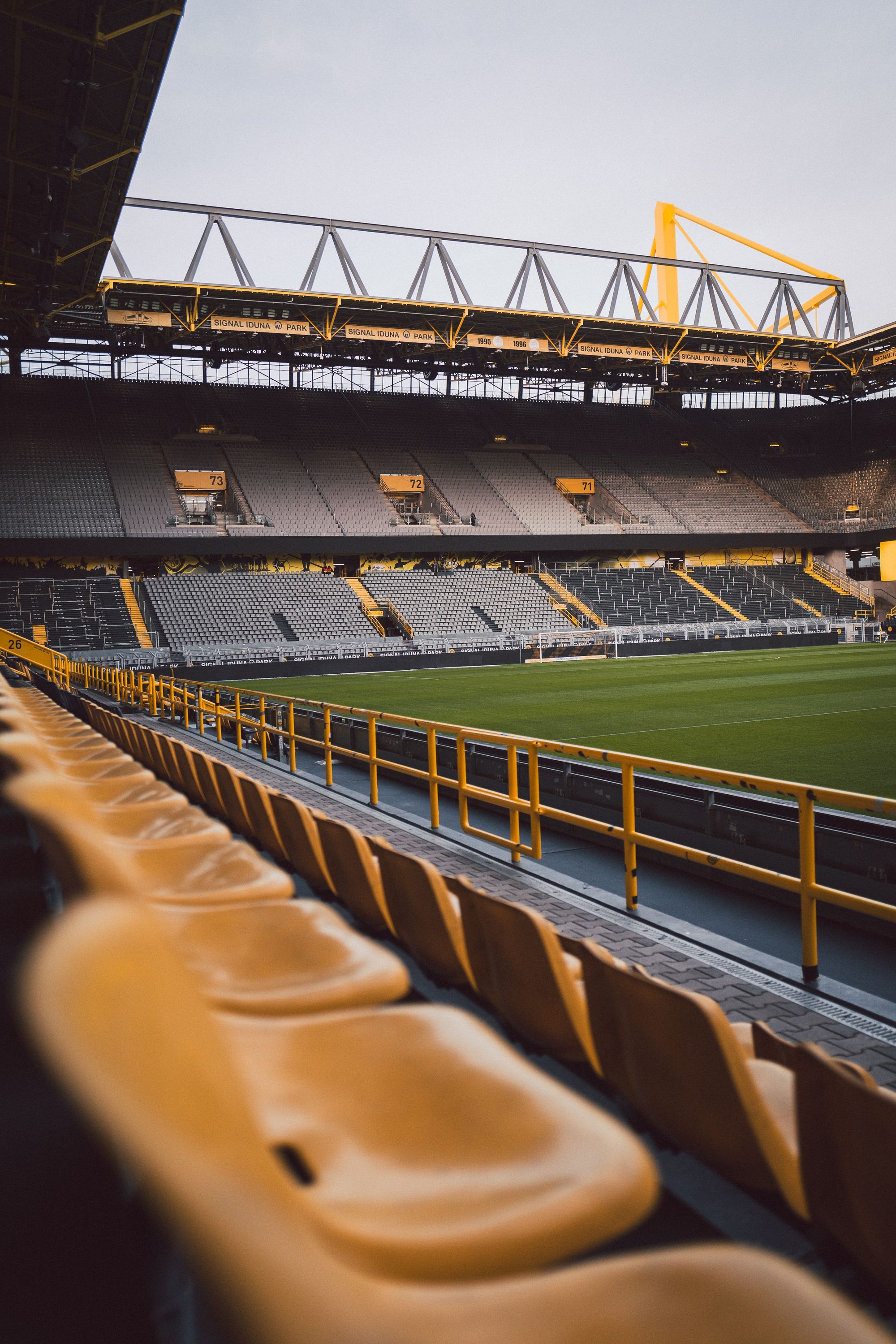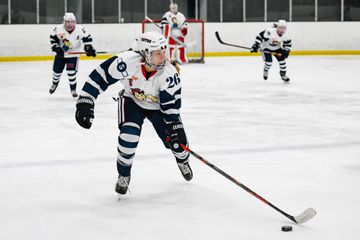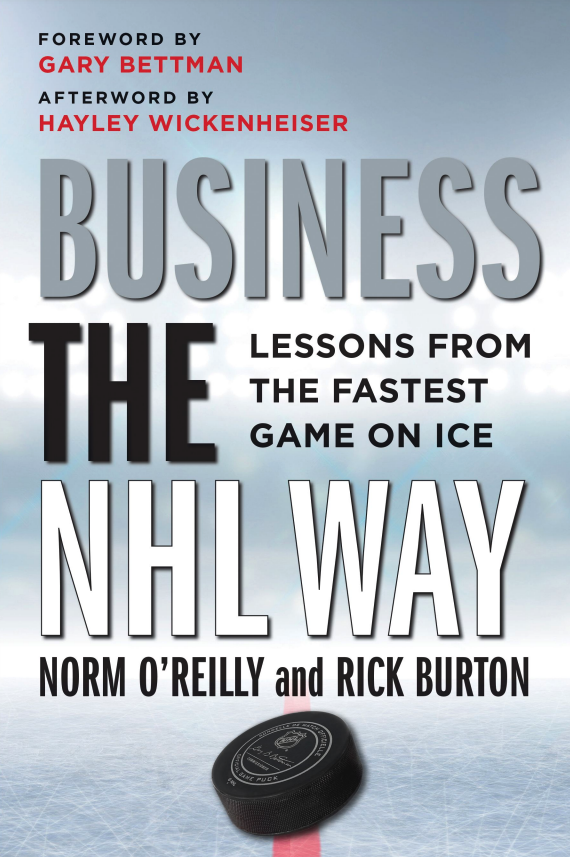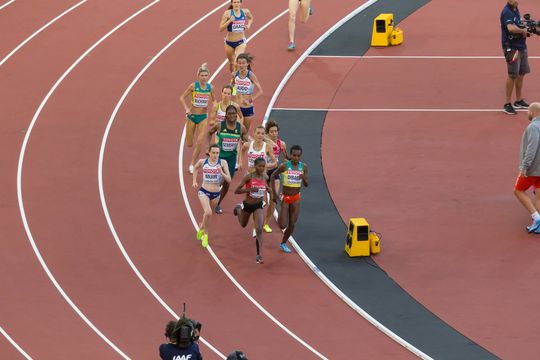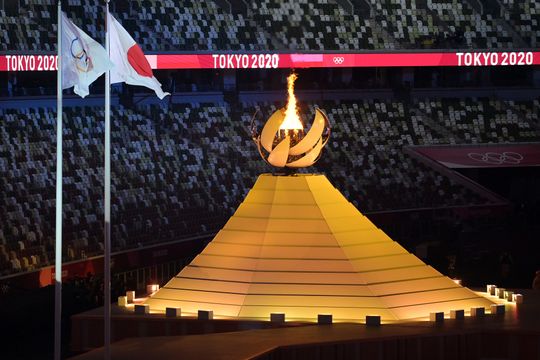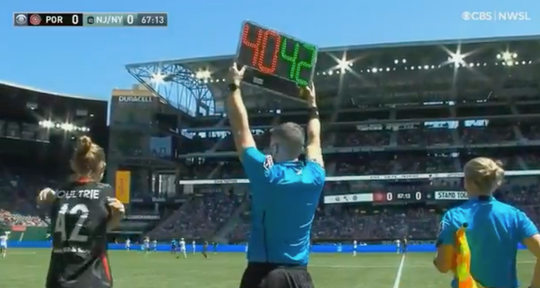The chorus of voices asking when pro sports will return is growing louder. Despite the COVID-19 pandemic, there has been a consistent dialogue about how to bring men's professional sports back as soon as possible. The excuses for this foolhardy endeavor are many. If pro sports return, it will create a sense of normalcy and provide comfort and distraction. But those pushing hardest have economic motives. This effort is spearheaded by prominent government officials, such as U.S. President Donald Trump and various league commissioners and team owners, who seem to understand the pandemic only in terms of their financial bottom line.
In Europe, top-flight soccer leagues are testing the waters and figuring out when they can resume their seasons. The Bundesliga, Germany's highest level of men's pro soccer, has already resumed training, while the English Premier League is planning a June return. [1] Commissioners of men's sports leagues and prominent owners are participating in discussions to "restart the American economy," which includes the return of men's pro sports as a cornerstone of economic recovery.
There are signs from some countries that men's pro sports are already returning to normal operations. This week in Taiwan, the pro basketball season resumed as the Super Basketball League began its playoffs. The Chinese Professional Baseball League opened its season. In Florida, pro wrestling and the WWE have been declared "essential." [2] In Belarus, men's pro soccer never stopped in the first place.
On the flip side, women's pro leagues and sporting events were cancelled relatively swiftly in March, and fans of women's sports should be concerned. The full impact of the COVID-19 pandemic is not known. The economic toll of the depression occurring in its wake will likely devastate many men's sports programs, pro leagues, and professional teams. And women's sports face a much more dire outlook. Women's sports and athletes have always made do with less money, less resources, and less media support primarily because misogyny is built into the way many fans still understand and enjoy sports. This same misogyny will also impact, to the detriment of women's sports, any financial bailout teams and leagues receive. Put simply, women's sports and athletes have much less to fall back on, and are much less likely to be able to continue as normal. Women's sports will be asked to do with even less after the pandemic subsides.
Given the existential threat women's sports at all levels, college, pro, international, are facing because of this pandemic, it is understandable why many, athletes, and fans alike, would push for a speedy return. Lindsay Gibbs had a practical solution for giving women's sports the boost they need to weather this catastrophe: "I'm not proposing decades without men's sports. I'm proposing, like, a month. A month where the billions of fans and television networks and sponsors and advertisers who are all completely starved for live sports of any kind only have the option of watching women's sports." The idea is simple, easy to implement, and would bring the excellence of women's sports to the attention of countless new fans.
But it's hard to imagine men in sports waiting. There have already been countless suggestions and proposals to re-start men's leagues or squeeze new summer seasons into truncated schedules from prominent officials. My personal favorite nightmare scenario is the suggestion that Major League Baseball conduct its season sequestered in Arizona, playing in front of empty stadiums, while players and team officials live in otherwise deserted area hotels. Preliminary discussions between the state's governor and league officials have already taken place. It's a scenario where baseball's surveillance panopticon would switch from cheating scandals to player health monitoring with disturbing ease.
To me, though, the question should not be "when will sports come back?" but "what are sports leagues doing to ensure the health and safety of their employees and fans?" There is not one professional athlete, of any gender, whose contractual obligations make provisions for a global pandemic such as this. What these athletes will be asked to do in the coming weeks and months, what some are already being forced to contemplate, should resonate with many of us right now. Millions of sports fans continue to work in essential industries. Many of us work in healthcare, food service, agriculture, and retail; many of us make deliveries, ship goods from warehouses, and stock shelves and check out customers at grocery stores. People who do these jobs are operating in extremely high risk situations, without proper safety equipment and financial compensation. For sports to return to normal this quickly, without an effective vaccine and widespread testing, would require many who work in sports, such as stadium personnel, hotel workers, and athletes themselves, to willingly face similar risks, but for work that is not essential at all.
We tend to view issues of health and safety in sports as dramatically different from occupational safety measures in other industries. On the surface of things, it might seem like a soccer player suiting up with a hamstring injury or a hockey player staying on the ice after a bad hit to the head isn't the same as health and safety risks that the rest of us face on the job. But being compelled to play through injury by your boss or employer should resonate with more fans during this pandemic. Health and safety issues in sports are labor issues, just as much as they are in any industry. Workers must have the right to refuse unsafe labour, whether they work at a grocery store, in a hospital, or on the soccer pitch. Workers must have the right to refuse labor outside the scope of their job descriptions, whether they are teachers conscripted into providing healthcare assistance or athletes being forced to start or continue seasons in isolated, shared working and living facilities without addressing how such conditions lead to COVID-19 outbreaks in the NBA and NHL respectively.
If the actions of the NHL and NBA in early March are any indication, men's pro sports will risk everyone's health and defy public health recommendations to ensure the games go on. Owners have already shown their craven disregard for the health and safety of those who work in the sports entertainment industry. It was NBA players, not owners, who stepped up with pledges to cover salaries of arena staff and team employees. Some team owners were shamed into following their lead. Liverpool captain Jordan Henderson has organized men's and women's footballers to raise crucial funds for the NHS. At the same time, the Premier League and the NBA have demanded their players take 30 percent and 50 percent pay cuts respectively across the board. Throughout this pandemic, decision makers in men's sports have prioritized profits over public health and worker safety.
Even some of the most ardent supporters of women's sports can be reticent to view them as professional on the same level as men's sports, and to see women's athletes as part of a larger labor movement. The question of whether to resume play, and how and when, must be posed to women's sports as well. Often, women's pro leagues struggle to pay their players professional wages and health benefits. Many are willing to overlook these glaring and unsafe conditions as part of a perpetual cycle to "grow the game." But by not consistently demanding greater support from men's leagues and governments that financially prop up men's pro sports, and by not providing greater transparency, women's leagues continually place their players in harm's way.
The COVID-19 pandemic has made this disparity abundantly clear. Many male athletes can afford to isolate and physically distance while still maintaining training regimens. Their homes are big enough, their finances secure enough. They can donate hundreds of thousands of dollars to relief causes and not worry about mortgages. This is not to denigrate the generosity shown by many men in sports right now. On the contrary, what the Jordan Hendersons of the world are best suited for during a global pandemic are donating money and staying home. [3] Most women athletes don't have this kind of financial stability. In fact, stories of elite women athletes serving as essential workers during the pandemic are commonplace. Hockey Hall of Famer Hayley Wickenheiser was instrumental in the push to delay the Tokyo 2020 Olympic Games. She was finishing her final year of medical school with a rotation in several Toronto hospitals before the pandemic hit and is currently spearheading a national drive for PPE for health care workers. Rugby players like American Tess Feury and Bradford Bulls captain Amy Hardcastle are working as full-time nurses. For World Health Day 2020, the IOC honored eight Olympic athletes working as doctors, nurses, and paramedics during the pandemic. All played women's sports.
The response from women athletes shouldn't be surprising. Women athletes must plan for concurrent and post-playing careers, while men's athletes often have the luxury of forgoing additional labor completely and not worrying about taking jobs outside of sports when they retire from play. There are countless women athletes doing unheralded work in essential services right now. These women are risking their playing careers and their lives. And yet we refuse to see women's sports as part of a larger labor concern, as part of the plight of all workers across the globe who do not receive adequate compensation and protection.
Because growing the game rarely results in securing stability, few women athletes have the salary and healthcare provisions of their counterparts in men's sports. Many rely on partners and family for access to healthcare and financial assistance. But more than 22 million Americans have filed for unemployment since President Trump declared a state of emergency. Nearly 6 million Canadians applied for the CERB [4] in its first month, more than 15 percent of Canada's entire population. For those who play women's pro sports, safety nets, including health insurance, are disappearing. Numerous men's pro leagues and teams have partnerships with their women's league and team counterparts. It's crucial to ask what financial support they're offering. Is the NHL or its teams offering the NWHL and PWHPA financial support or healthcare resources during the pandemic? How much are they giving? Hockey fans should be eager for that answer. [5]
But it is also important to ask what steps women's leagues are taking to ensure the health and safety of their players and that women's players have leagues to come back to when the pandemic ends. Their resources are limited, which makes their decisions all the more pertinent and challenging. In light of the current situation, it is odd, to say the least, that the NWHL is currently planning to expand to the Toronto market. I would question even the most financially stable league if they announced plans to expand during a pandemic, into another country, while that country's currency was cratering, and its border closed to the league's current base of operation. It is difficult to envision a scenario where women's hockey returns in the fall, let alone expands.
The WNBA season was scheduled to begin on May 15, but the league said at the start of April it was postponing training camps and the season tip off. League officials have not floated a return date, but have suggested the relatively small size of the league makes an earlier return possible. In the meantime, an active free agency period and a Friday night draft on April 17 have kept the new collective bargaining agreement in full view. The landmark deal provides WNBA players with wages and benefits surpassing anything their counterparts in the NWSL or NWHL receive, putting WNBA players in a better position to manage the realities of the COVID-19 pandemic. WNBA commissioner Cathy Engelbert was named to the U.S. president's economic re-start panel, but her NWSL counterpart, Lisa Baird, was not. The NWSL was slated to begin in April, but has been delayed until at least May 5. League owners are targeting the end of June to start the 2020 season, but any delay is a blow to a league and a sport hoping to capitalize on the tremendous success of the USWNT at the 2019 World Cup.
Our circumstances demand a re-envisioning of how sports functions in our society, with safety at the forefront. We cannot behave as if things will return to "normal", because the normal we had before wasn't good enough, either, and will not serve us well as the pandemic continues to spread. We need to proceed with an abundance of caution. Lives literally depend on this, and women's leagues have as much responsibility as anyone else in terms of ensuring a safe return to play, whenever that may be – and it should be a long time from now.
[1] - England's Women's Super League hopes to complete its season in August.
[2] - While WWE is a mixed gender league, the majority of its athletes are men.
[3] - There are male athletes who are serving in essential fields right now, including Maxime Mbanda, a fixture on the Italian national rugby squad, who is volunteering as an emergency ambulance driver in Italy.
[4] - The CERB is an emergency response benefit intended to help Canadians experiencing unemployment and illness or providing caretaking roles to family members due to COVID-19. The number of applicants will continue to grow as the COVID-19 emergency continues and eligibility expands.
[5] - If you guessed literally zero dollars, you would be correct.
(Photo: Marvin Ronsdorf / Unsplash)
